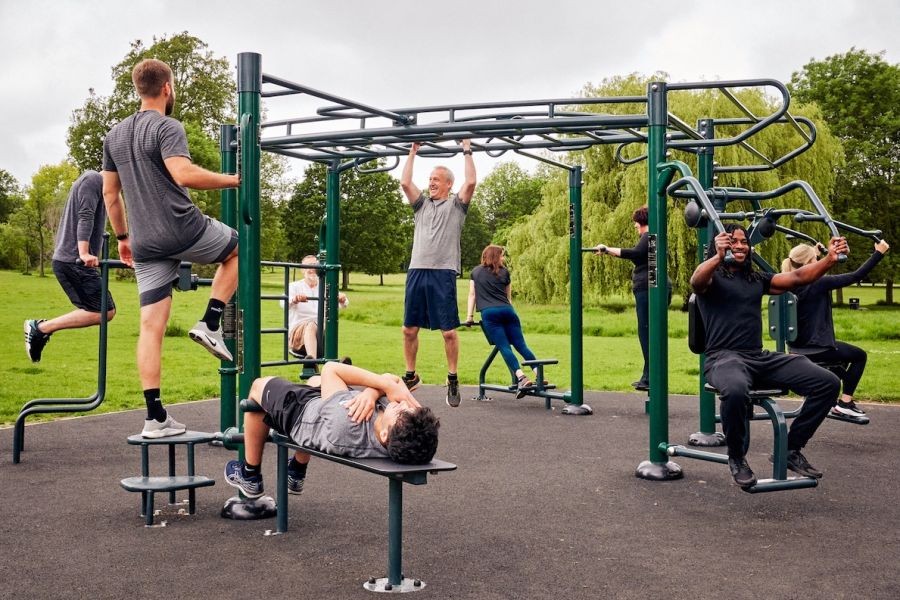The debate between personal training and group fitness has been ongoing, with each offering unique benefits and challenges. In Australia, a country where health and wellness are increasingly prioritized, understanding the effectiveness of these approaches can significantly impact the fitness industry and individual health outcomes. This article delves into the nuances of personal training and group fitness, providing data-backed insights and real-world examples to guide Australians in making informed decisions.
The Importance of Fitness in Australia
Australia's fitness industry is a key player in the economy, contributing significantly to employment and health outcomes. According to the Australian Bureau of Statistics (ABS), the fitness industry has seen continuous growth, with more Australians investing in their health and wellness than ever before. The industry not only supports physical health but also contributes to mental well-being, a crucial aspect in today's fast-paced world.
Personal Training: A Tailored Approach
Personal training offers a customized fitness plan, focusing on individual goals and needs. This one-on-one approach allows trainers to tailor workouts, monitor progress closely, and provide motivation, which can be particularly beneficial for those with specific health goals or medical conditions.
- Pros: Personalized attention, customized workouts, and flexibility in scheduling.
- Cons: Higher cost and potential dependency on the trainer for motivation.
In Australia, personal trainers are required to be accredited by organizations such as Fitness Australia, ensuring a standard of quality and safety in training. This regulatory framework guarantees that clients receive evidence-based fitness guidance.
Group Fitness: Community and Motivation
Group fitness classes offer a sociable way to exercise, providing a sense of community and shared motivation. These classes, which can range from yoga and Pilates to high-intensity interval training (HIIT), cater to various fitness levels and preferences.
- Pros: Social engagement, motivation through group dynamics, and often more affordable than personal training.
- Cons: Less personalized attention and potential for overcrowding in popular classes.
In Australia, group fitness has gained popularity due to its affordability and accessibility. Many fitness centers, such as F45, originated in Australia and have expanded globally due to their successful group training model.
Case Study: F45 Training – A Group Fitness Success
Problem: F45 Training, a fitness franchise founded in Australia, aimed to create a high-intensity group workout that was both effective and engaging.
Action: The company developed a unique training system that combined innovation with personal trainer-led group workouts. They incorporated technology to track performance and progress.
Result: F45 Training has grown significantly, with over 1,750 studios worldwide as of 2023. The model's success is attributed to its community-driven approach and consistency in delivering effective workouts.
Takeaway: The F45 model highlights the power of community and innovation in fitness. Australian businesses can leverage similar approaches to enhance customer engagement and retention.
Expert Insights: Navigating the Fitness Landscape
Dr. Emily Roberts, a sports scientist at the University of Sydney, emphasizes the importance of choosing a fitness approach that aligns with personal goals and lifestyle. "Both personal training and group fitness have their merits. The key is finding what motivates you and fits into your life sustainably," she notes. Her research indicates that individuals who enjoy their fitness routines are more likely to maintain them long-term.
Data-Driven Analysis: What Do Australians Prefer?
According to Fitness Australia's 2023 report, 68% of Australians engage in some form of group fitness, while 30% opt for personal training. This preference for group classes is driven by the social aspect and the variety of workouts available. However, personal training remains popular among those seeking tailored fitness solutions.
Myths vs. Reality
- Myth: "Personal training is only for athletes or the wealthy." Reality: Personal training is accessible to anyone, with flexible pricing options and packages. Many Australians use personal training for specific health goals or rehabilitation.
- Myth: "Group fitness classes are not effective for weight loss." Reality: Group fitness, especially high-intensity classes, can be highly effective for weight loss and overall fitness improvement when combined with a balanced diet.
Common Mistakes to Avoid
- Avoid choosing a fitness program based solely on trends. Ensure it aligns with your personal goals and lifestyle.
- Don't underestimate the importance of recovery and rest days to prevent injury and burnout.
- Avoid neglecting nutrition as part of your fitness journey; it plays a crucial role in achieving results.
Future Trends in the Australian Fitness Industry
As technology continues to evolve, the integration of digital tools in fitness is set to grow. Virtual reality workouts and AI-driven fitness plans are emerging trends that could redefine how Australians approach their health and fitness. By 2026, it's predicted that digital fitness solutions will become a standard offering in most gyms across the country.
Conclusion
In the debate between personal training and group fitness, the choice ultimately depends on individual preferences, goals, and circumstances. Both approaches offer unique benefits and can be effective in promoting health and wellness. As the Australian fitness industry continues to evolve, integrating technological advancements and focusing on community-driven approaches will be key to success. What's your take on personal training versus group fitness? Share your thoughts and experiences below!
People Also Ask (FAQ)
- How does group fitness impact health in Australia? Group fitness classes have been shown to increase motivation and adherence to exercise routines, contributing to better overall health outcomes.
- What are the biggest misconceptions about personal training? Many believe personal training is only for athletes, but it's accessible and beneficial for anyone with specific health or fitness goals.
- What are the best strategies for implementing a fitness plan? Experts recommend setting clear goals, choosing enjoyable activities, and integrating a balanced diet and rest into your routine.
Related Search Queries
- personal training benefits
- group fitness classes Australia
- best fitness programs for weight loss
- F45 Training success story
- future of fitness in Australia
- personal trainer accreditation Australia
- digital fitness trends 2026
- fitness industry growth Australia
- effective workout plans
- fitness motivation strategies






























HortenseFr
3 months ago